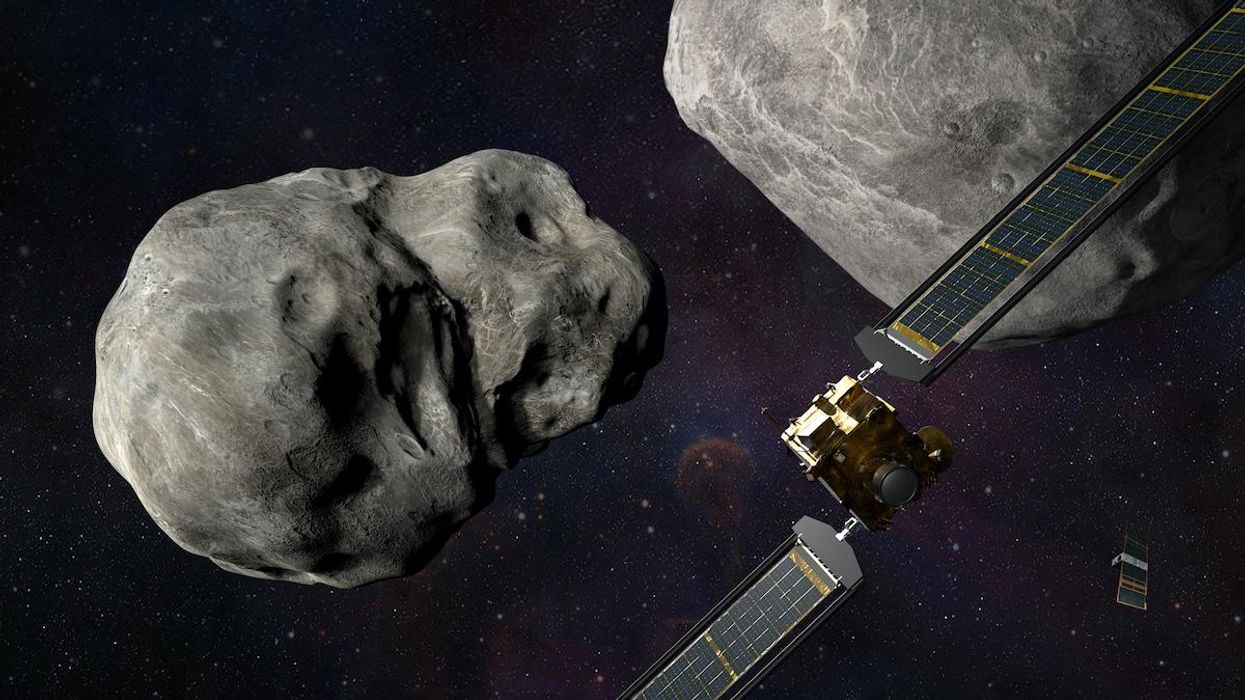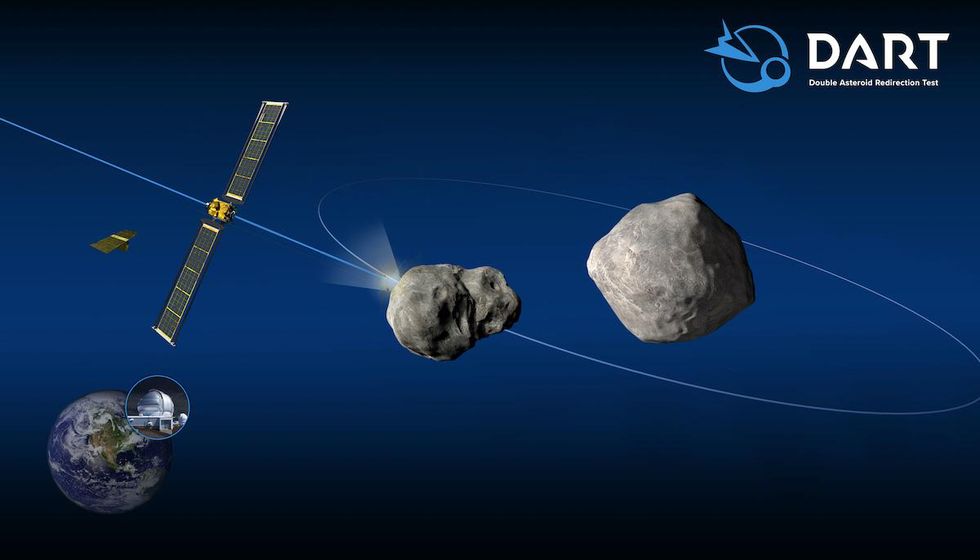
Image Source: NASA/Johns Hopkins, APL/Steve Gribben

It sounds like a scene out of a sci-fi disaster movie, but NASA's upcoming Double Asteroid Redirection Test mission is real — and it aims to evaluate our chances of preventing a hazardous asteroid from striking planet Earth.
On Nov. 24, NASA will send a spacecraft above the Earth aboard a SpaceX Falcon 9 rocket with the intention of crashing it into an asteroid's moonlet to change the celestial body's trajectory.
"DART will be the first demonstration of the kinetic impactor technique, which involves sending one or more large, high-speed spacecraft into the path of an asteroid in space to change its motion," the agency announced on Sunday.
The spacecraft's target will be near-Earth asteroid Didymos and its moonlet, which according to NASA are about 2,559 feet and 525 feet across, respectively. The agency noted that the moonlet is "more typical of the size of asteroids that could pose the most likely significant threat to Earth."

If all goes as planned, the spacecraft will strike the moonlet head-on traveling at a speed of 6.6 kilometers per second, or faster than a bullet travels when fired from a gun.
The impact is expected to be significant enough to alter the moonlet's speed by a fraction of 1%, which doesn't sound like much but is actually enough to "change the orbital period of the moonlet by several minutes — enough to be observed and measured using telescopes on Earth."
Scientists will have to wait a while before witnessing the crash, however. After launching from Vandenberg Air Force Base in California on Nov. 24, the spacecraft will cruise for more than a year before intercepting the Didymos' moonlet in late September 2022 when the moonlet is close enough to Earth to enable observations.
CBS News reported that "the mission is reminiscent of the 1998 sci-fi action movie 'Armageddon,' in which the space agency deploys a team of civilians to land on an asteroid and detonate it before it destroys Earth."
But while the plot may be somewhat similar, it differs in one major way: NASA scientists note that neither Didymos nor its moonlet pose a threat to Earth. In fact, they don't anticipate such a risk in the next 100 years, the Washington Post reported.
Rather, the mission is for the purpose of testing how effective DART missions can be should one be needed later.
"We're going to make sure that a rock from space doesn't send us back to the Stone Age," Thomas Statler, a NASA scientist, said on the agency's podcast recently, the Post noted.
He added that although the collision isn't immediately stopping an Earth-shattering asteroid, it is a mission of "historical proportions" since it will mark "the first time that humanity has actually changed something in space."
"We've left footprints and tire tracks and things like that, but this will be the first time humanity has changed a celestial motion," Statler said.